INTRODUCTION
India is one of the most rapidly growing militaries in the world. They have evolved from a regional force with tactical capabilities to a growing strategic force with global reach. They are heavily dependent on foreign suppliers for equipment as their local industry hasn’t quite delivered as promised. But the ones in service are top quality indigenous systems. This article will cover the 10 most powerful weapon systems used by the Indian Armed Forces. It is interesting to note that even though most of the weapons in the list are foreign supplied, the Indians have modified many of them to suit their requirements. They are known for purchasing well-known platforms and integrating them with subsystems from around the world to create a lethal system which would turn out better than the original. This makes them a force to reckon with. The order of weapons in the article is entirely based on my analysis and opinion. I haven’t included strategic nuclear weapons and their delivery platforms. After over a hundred fan requests in the past month, Defencyclopedia brings you this article. So sit back and enjoy reading it.
-
Pinaka MLRS

The Pinaka was India’s long-range replacement for the vintage BM-21 Grad MLRS (Multiple Launch Rocket System). It entered service in 1998 as a 40 km range system and consists of 12 rockets mounted on an 8×8 truck with NBC protection. An improved variant with 65 km range rockets is currently in service. These are highly networked rocket launchers and operate in conjunction with Weapon Locating Radars, Battlefield Surveillance radars, Unmanned Aerial Vehicles and long range IR and Optical sighting systems which enhance their accuracy and effectiveness in combat. DRDO has teamed with Israel Military Industries (IMI) to install a GPS guidance system on the rockets to use them for precision attacks. They have also been combat proven in the cold and high altitude regions during the Kargil conflict in 1999.
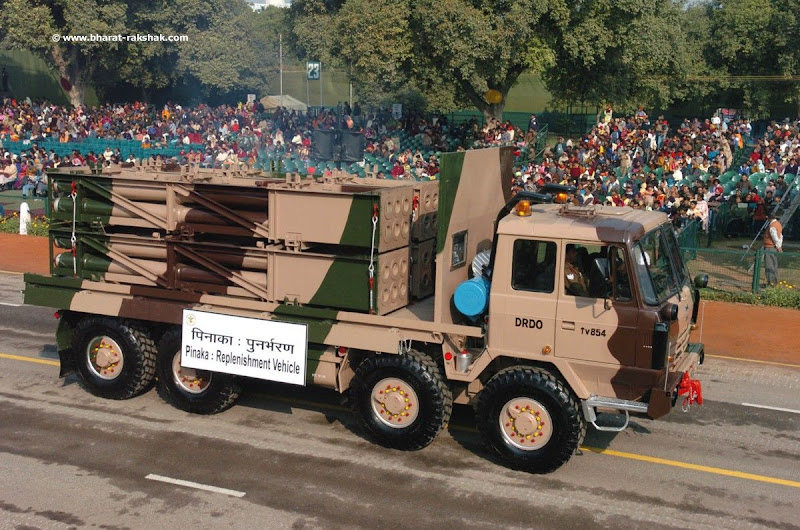
It is interesting to note that the Pinaka is 10 times cheaper than its American equivalent, the M270, while offering similar or better performance! A Pinaka battery has a total of 288 rockets on launchers and replenishment vehicles. The India Army has reportedly ordered over 15 batteries and 5000 rockets are being produced per year. A future variant of Pinaka with 120 km range is in development and it would be in the same class as the Russian Smerch heavy rockets.

-
PAD/ AAD Ballistic Missile Defense (BMD) System

The Indian BMD program raised eyebrows when it was first announced and has come a long way since. It has been successfully tested against a short range ballistic missile and is reportedly deployable at short notice to protect major cities. Two interceptor missiles, the PAD (Prithvi Air Defence)and the AAD (Advanced Air Defence) along with the Green Pine radar form the core of this system. The PAD is an exo-atmospheric interceptor with a ceiling of over 80 km and a range of over 2000 km. It is used to intercept ballistic missiles which are travelling outside the Earth’s atmosphere. The AAD is an endo-atmospheric interceptor with a range of 250+ km and a ceiling of 30 km. It’s used to intercept short-range ballistic missiles. Both these missiles initially guided by an Inertial Navigation System (INS) and have an active radar seeker for homing in on the target.

The long-range Swordfish radar is used to track and provide fire control to these missiles. This Israeli radar has a range of 800+ km and can be used for tracking enemy missile launches and trajectories. India is upgrading this radar to increase its range to 1500 km. This will be used along with upgraded variants of the PAD/AAD missiles which will have a longer range and a higher flight ceiling. It is said that the AAD missile can be used as a long-range SAM to shoot down enemy aircraft and cruise missiles as well. This would make India one of the few operators of 250+ km range SAMs. The PAD and AAD missiles working in tandem are said to have a hit probability of 99.8% against enemy ballistic missiles.
-
NaMiCa (Nag Missile Carrier)
This is a relatively unknown weapon that is developed by India. The core of this system is the 3rd generation Nag Anti-Tank missile mounted on a modified BMP-2 chassis. It contains 8 Nag missiles in armored box launchers plus a further 8 for reload with a complete optical and IR sensor suite to detect enemy tanks. These missiles are fire and forget and have a top-attack capability which allows them to target the vulnerable top part of the tanks. The Nag has a tandem High Explosive Anti-Tank (HEAT) warhead which enables it to penetrate any armour in the region. It has successfully detected targets at 5 km and engaged them in day and night conditions and has demonstrated its ability to destroy enemy tanks. The most unique ability of this system is its amphibious capability, which allows it to be cross any water body in the battlefield.

This weapon system is very unique as very few armies possess similar systems. The Indian Army has placed an initial order for 13 Namicas and 443 Nag missiles. They have projected a requirement for 200 Namicas and 7000 Nag missiles. The Namica will form an integral part of Indian Army armoured formations. It will spearhead tank divisions and eliminate high-priority enemy armoured targets at long ranges. Future variants may incorporate longer ranged Nag missiles.
-
P-8i Neptune

India has a 7500 km long coastline and hundreds of islands which need protection. The water bodies surrounding India are expansive and perfect for hostile submarines to lurk in. That’s where the P-8I comes in. It was chosen for its excellent endurance and sensor suite which is unequalled by any other ASW aircraft. It has a mission endurance of 4 hours at a distance of 2000 km from base. This means that it can fly 2000 km from base, hunt submarines for 4 hours and then fly back 2000 km to base on just its internal fuel. The fact that it is essentially a modified commercial airliner makes its maintenance very easy. The P-8I has a long-range search radar in its nose and the Indian variant is unique in having a Magnetic Anomaly Detection (MAD) boom at the aft to hunt submarines. Also, the Indian variant replaces several electronics systems with Indian versions.

It can carry 120 sonobouys internally and 6-8 Mk-54 torpedoes in its bomb bays along with 4 Harpoon missiles under its wings. This allows it to engage a whole range of surface and underwater threats. The P-8I thus gives the Indian Navy the ability to project power in the Indian Ocean and hunt submarines thousands of km away from their coast. India currently operates 8 aircraft with 4 more on order. They have an option to purchase 12 additional aircraft at a later date, which I’m sure they will after retiring their Tu-142s in the next decade.
-
T-90S Bheeshma

Being an operator of over 5000 T-55/72 tanks, it was natural that the Indian Army chose the T-90S as their replacement. They were first procured hurriedly from Russia in response to its neighbor’s attempt to purchase the T-80 and Abrams tanks. It weighs just 48 tons and has a crew of 3 which is made possible by the use of an autoloader for the 125 mm smoothbore gun. The unique feature of this tank is its ability to fire the Invar anti-tank missile from its barrel. The other special feature is that, even though the 12.7 mm machine gun mounted on the turret is manually operated, it can also be remotely controlled from inside the turret by the commander. The Indian variants have indigenous Kanchan ceramic armour which is topped by a layer of Explosive Reactive Armour (ERA). It is powered by a diesel engine which makes maintenance easier and reduces fuel consumption compared to the gas turbines of the T-80.
It is said that the Indian T-90S are downgraded variants of the Russian T-90A, but the Indians have fitted it with Israeli, French and Swedish sub systems and have made it possibly better than the Russian variant itself. It is slated to be fitted with the Saab LEDS-150 Active Protection System (APS) which will give it a 3-layered defense against enemy anti-tank munitions. The first layer is the APS, the second layer is the ERA and the third layer is the Ceramic armour. The T-90S can be easily deployed anywhere as it can be airlifted by Il-76 and C-17 transports of the IAF. India operates around 600 T-90S and the eventual number by 2020 is expected to be around 1500 tanks.
-
INS Vikramaditya and Kolkata Class destroyers
The 5th place is tied between India’s advanced Kolkata class destroyers and it’s aircraft carrier INS Vikramaditya. Both are extremely powerful assets which will operate together in order to project power and carry out missions.


India’s latest aircraft carrier, the INS Vikramaditya is the largest ship ever operated by them. This 45,000 ton refurbished carrier is currently the most powerful asset in the Indian Ocean. It has the capacity to deploy 24 MiG-29K fighters along with 6 ASW/AEW helicopters. This formidable combination gives the Indian Navy a very useful power projection tool. The carrier has a Russian electronic and sensor suite which is said to be powerful enough to prevent it from being tracked by powerful airborne radar systems. Though currently unarmed, the carrier will receive the Barak SAM for self-defense during its first refit. The carrier uses a ski jump to launch fighters and arrestor wires to recover them, classifying it as a STOBAR carrier.


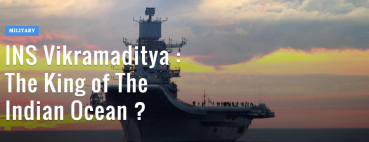

The Kolkata class is the first modern Indian destroyer. Indigenously designed and built, this class of 3 ships will add considerably to the capability of the Indian Navy. It is also the first Indian warship to use an Active Electronically Scanned Array (AESA) radar, the MF-STAR which has 4 static panels instead of a single rotating panel. This Multi-Function radar also allows for the replacement of a dozen other smaller search, track and fire control radars with a single system.


Its main armament is a battery of 16 vertically launched BrahMos supersonic long-range Anti-Ship missiles. This is by far one of the deadliest missile armament of contemporary warships. It can hit ships at ranges of around 300 km with extreme accuracy. The primary SAM is the Barak-8 Long range surface-to-air missile (LRSAM). This modern missile is lightweight, accurate and can hit targets up to 90 km away. The ship also has anti-submarine rocket launchers, torpedo tubes, 76 mm main gun, 30 mm Gatling guns and a dual helicopter hangar. Overall it is a very balanced and highly capable multi-role destroyer.
-
Phalcon AWACS
India was late in entering the Airborne Early Warning and Control System (AWACS) scene, but they did so with a bang, by procuring what is described by the FAS as the most advanced AWACS in the world. It consists of an Israeli Elta EL/W-2090 radar mounted on a Russian Il-76 aircraft. This radar is a 360 ° Active electronically Scanning Array (AESA) which is mounted inside a dome on top of the Il-76. The specialty of the radar is that it is stationary as its beams are electronically steered as well, which eliminates the need for the radar to be steered mechanically. This allows it to track targets 10 times faster when compared to well-known systems like the E-3 Sentry. It has an integrated IFF system, Electronic Counter Measures (ECM) and ECCM suites for self-protection, Electronic Intelligence (ELINT) for collecting data about enemy radars and monitoring communications and SatCom systems.
The 3 Phalcons are an invaluable asset for the Indian Air Force and act as major force multipliers. They can detect targets hundreds of km away and such a feature can prove to be vital in mountain and desert regions where ground based radars are not widely deployed. They can track targets simultaneously and guide fighter jets and SAMs to intercept them. The probability of detecting cruise missiles and repelling surprise enemy air attacks is very high if such a system is employed in combat. They are frequently deployed with fighter escorts and they can be vectored to intercept long-range threats. India is planning to procure a further 2-3 such systems.
-
INS Chakra

After acquiring the Akula II class SSN Nerpa from Russia on a ‘lease’ for 10 years, the Indian Navy gained the ability to provide a long-range underwater escort for their carriers and destroyers. The INS Chakra is modified for Indian needs and carries a mix of Torpedoes and Klub Anti-ship missiles which can be fired from the torpedo tubes. There are reports that India will acquire another Akula SSN, which is currently under construction.

-
BrahMos Missile
This is undoubtedly the most famous weapon that India has. It was the result of a joint venture between India and Russia to modify the Yakhont missile for Indian needs and make it into a universal missile which could be launched from any platform. This 9m long missile which weighs 3 tons has now become the backbone of the Indian Defense forces as a long-range standoff weapon. It is currently employed by the India Navy on most of their major warships. Indian Army has inducted 3 regiments and the Air Force is conducting trials for the air-launched variant. The air-launched variant has a reduced weight of 2.5 tons and 1 missile can be carried under the fuselage of the Su-30Mki.


The next generation of BrahMos is named as the BrahMos NG. It is basically a smaller version of the current BrahMos with similar performance and minor improvements. The NG will feature new gen micro-electronics and advanced composites which will drastically reduce its weight. The new smaller ramjet will also contribute to the smaller size and reduced weight. All the branches of the Indian military have expressed interest in the NG variant.

This missile has been covered in detail in my article CAN THE US NAVY SHOOT DOWN THE DEADLY BRAHMOS MISSILE ?
-
Su-30Mki

If there is one aircraft that has defined the Indian Air Force in the 21st century, it’s the Su-30Mki. This is a long-range, multi-role, supermaneuverable 4.5+ gen fighter which is built according to Indian specifications. The baseline Su-30Mk from Russia was modified with French, Israeli and Indian avionics to create the ultimate Su-30 variant for India. It became the Su-30Mki where ‘i’ stands for India (Indiski). After realizing the combat potential and versatility of this amazing fighter, the IAF placed an order for 272 aircraft which makes India the largest Su-30 operator in the world.

The Su-30Mki is the bread and butter of the IAF as the rest of their fleet consists of legacy 4th gen fighters which have just a fraction of the capabilities of this fighter. With its 4000+ km range, 12 Hardpoints for 8000 kg of weapons, PESA Bars radar, it outclasses any other fighter in the region. It is safe to assume that 1 Su-30Mki can do the job of 2 MiG-29 and 2 Jaguar combined. It is currently used for air defense, reconnaissance and ground attack. The Su-30Mki is evolving into a cruise missile platform for the IAF. By 2016, it will be integrated with BrahMos and Nirbhay cruise missiles which would give it strike capabilities never before imagined by the IAF or its rivals. It also is integrated with several indigenous and imported electronic jamming pods and anti-radiation missiles which make it a deadly platform for Suppression/Destruction of Enemy Air Defense (SEAD/DEAD) which is the most important part of modern warfare to sanitize enemy threats.
The origins of the Su-30 has been covered in detail here
CONCLUSION
The weapon systems covered in this article give you a brief idea about the capabilities of the Indian Armed Forces. Equal importance has been given to army, naval and air force weapon systems. Many weapons Arjun Mk2, INS Vikrant aren’t on this list as they haven’t entered service and are still in developmental/testing phase at the time of writing. Since the list has only top 10 weapons, i couldn’t fit in several powerful weapon systems. Only matured weapons systems have been covered here.
If you enjoyed reading this article, rate it below!
You may also like
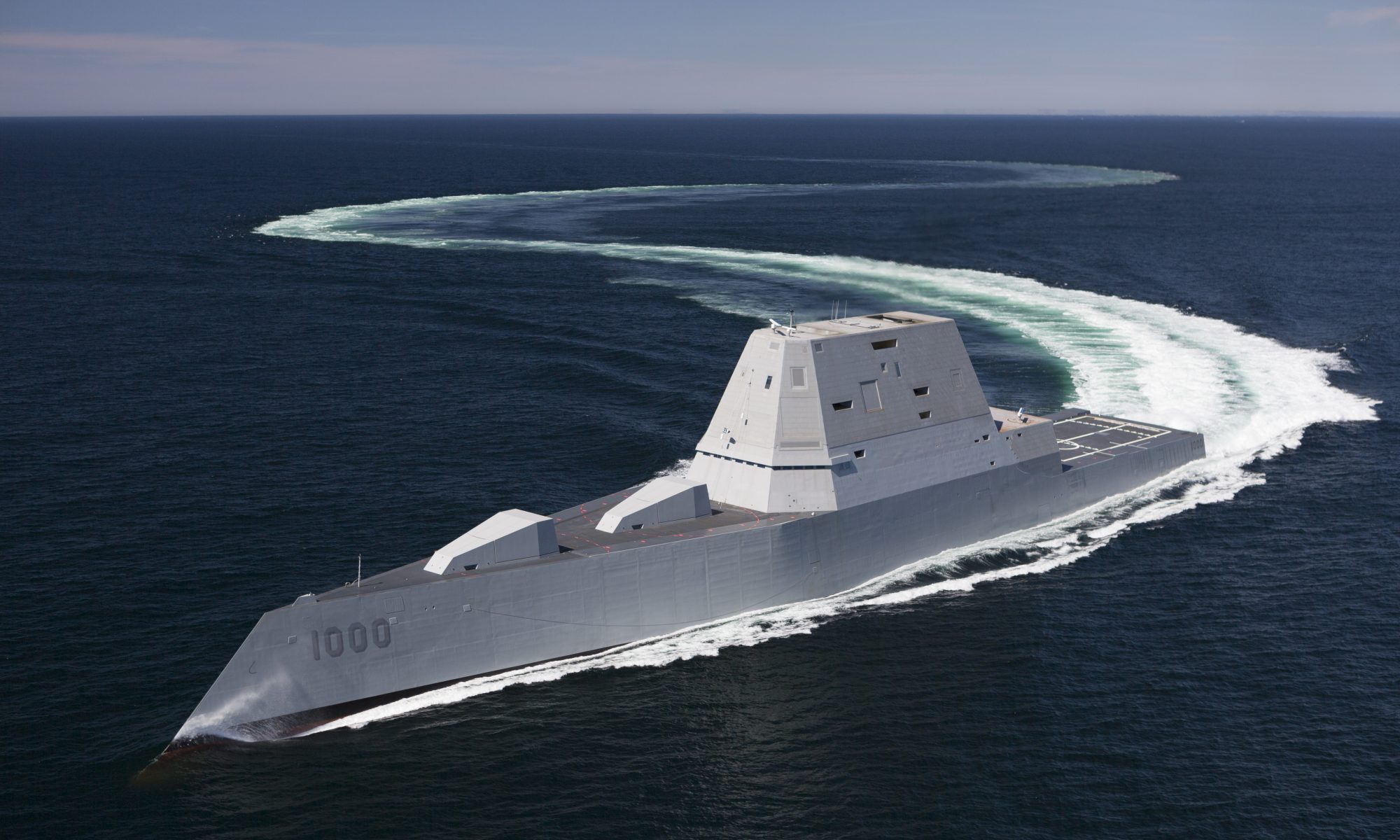
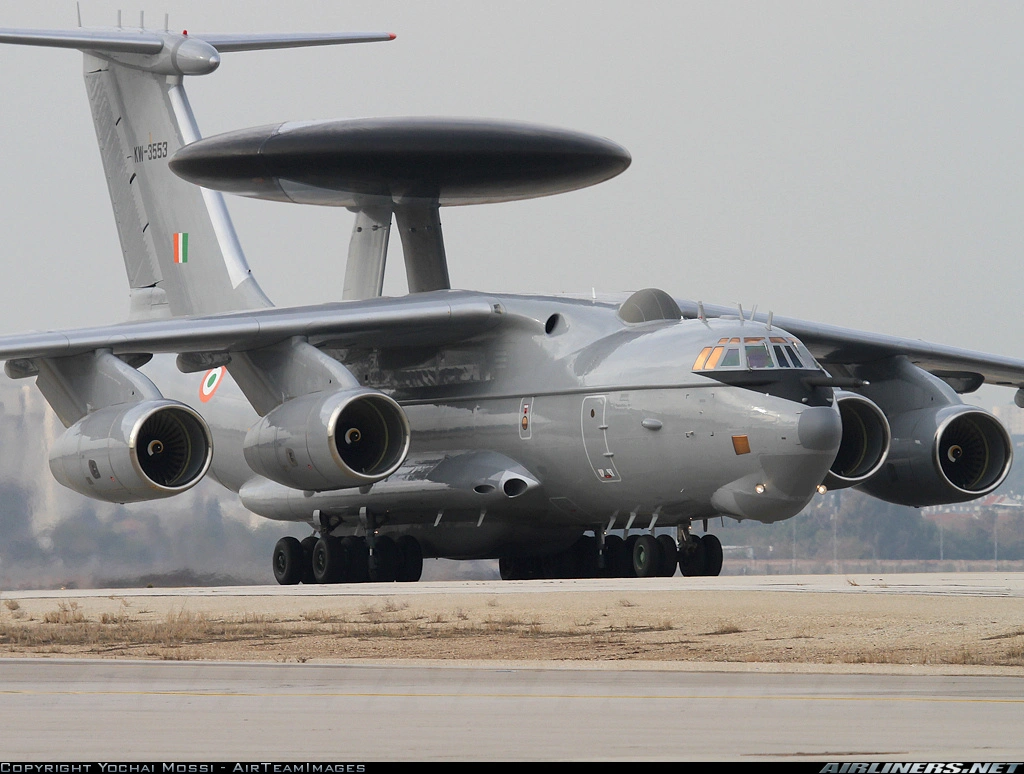

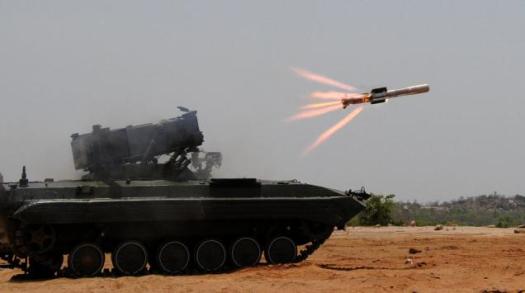
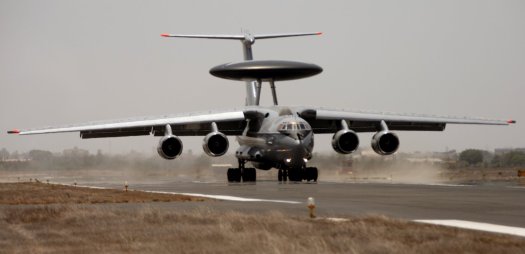
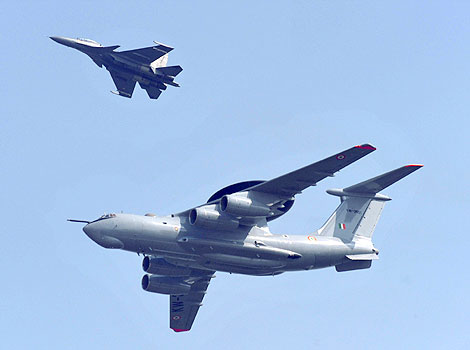
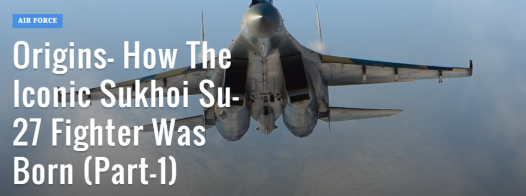

very powerful army
LikeLike
Jay hind
Jo mere maa ke bare me bura
Socha to uski kerr nahi…….
Jai hind
I love my maa
LikeLike
like Indian army
LikeLike
Still Indian army is backward from many countries military power. India is lacking from many advanced weapons technology. And need developed Indian or Indigenous weapons. There are many engineering stearm in India. Likewise Can’t India develop Mility Engineering course and attract youth to join in the course? It will definately change Indian future. To develop Nation; we should also strengthen our border.
LikeLike
Check this out :- https://justfindinganame.wordpress.com/2015/12/29/what-are-the-future-weapons-of-india-you-probably-dont-know-about/
LikeLike
Can you do a complete analysis between Akash missile system and S-400 missile system & which is better?
LikeLike
They are not even comparable. Both are very different in every aspect.
Akash is a basic short range air defense system. S400 is a very sophisticated ballistic missile defense system.
LikeLike
Waiting for your next Top 10 article on Russian Military.
LikeLike
India should do more efforts to compete Russia & america. If he does so, china will automatically come under him. We need more and more invention and maximum equipment should be built in India. Our resources should be used in India to improve our system. More Importantly if defense is great than attacking is fine. Because these days where every country is producing deadly weapon it’s easy to launch but difficult to stop it from it’s worst impact. We must have a solution for it first.
LikeLike
Why do you compare India with Russia USA or China , they are much larger to us in area that is why they have got much more resources and influence that’s it.
LikeLike
Then how do you explain Israel, France and Britain which are smaller than India, but still are way ahead in technology.
LikeLike
I read most articles about defense sector on many websites. But, N.R.P. every article, awesome.
what i like in your articles,You give respect to every weapon which it deserve with balanced mindset.
LikeLike
I have read many articles about Indian defence, it is very powerful but i think it can be develop, i want it to the first in the entire world. I love INDIA.
LikeLike
Is it confirmed that India will lease a latest Yasen class sub instead of old Akula class sub?
LikeLike
Russia will never give their latest yasen class sub as they have only 1 at present. They also have national security needs. India will be leasing another Akula, probably the new Iribis or the old Kashalot.
LikeLike
India does not want to acqire an original, but a customized Yasen.
LikeLike
That would be for the indigenous SSN program. They will most likely be based on Yasen-M
LikeLike
Sorry, couldn’t understand your comment…please explain.
LikeLike
India has announced that they will build 6 nuclear powered attack submarines locally. They are likely to be based on the Yasen-M, which is a smaller Yasen class submarine.
LikeLiked by 1 person
How many vls and turpedo tubes will be there in those 6 ssns and what about tonnage if they are mini Yasens? If I recall correctly bigger Yasen has 32vls.
LikeLike
Absolutely no information is available as the Indian govt hasn’t told anything. As per my estimates it will be 12,000 tons and similar to Akula 2
in dimensions. I expect it to have 8-16 VLS and 8 torpedo tubes.
LikeLike
Research should be enhanced to built our country equipments nevertheless importing it from other countries..India have huge human resource ,using this resource we could achieve a lot..
LikeLike
@Sanu, we all want that. Who wants to import less weapons/technology by giving more money. We always get less while paying more. There is no alternative to self-sufficiency; but to do that, you need to have a skilled labour force, smooth buerocracy, assembly lines for production, a good no. of scientists and experts generation, and of course, cabinet ministers who are serious about country’s defence instead of loudmouths.
LikeLike
Good well progress in last few years
LikeLike
OMG! You seriously think India’s next indigenious ssns will be of 12k tons!!! Chinese will pee in their pants. Actually I think their displacement will be 6,000tn-8,000tn.
LikeLike
INS Chakra has a displacement of 8000 tons when surfaced and 13,800 tons when submerged. Since they are already operating such a big submarine, i don’t see why their indigenous SSNs should be smaller. 10-12,000 tons when submerged is the expected displacement.
LikeLike
Thanks
LikeLike
Good article
LikeLike
dont u think series of agni missiles should also be included in the list.
LikeLike
I can include a lot more. But it wouldn’t be top 10 anymore.
LikeLike
Please post an article if comparison between Indian and Chinese weapons
LikeLike
Please post an article on the Kali series
LikeLike
Dear N.R.P, Pinaka future variant (Range = 120km) will be better than Russian Smerch, willn’t it be?
LikeLike
Can’t say. Just by looking at the range we can’t declare it is better. A lot depends on accuracy and payload as well.
LikeLike
But payload will be almost equals (around 250kg). Payload of Smerch is less than 250kg. Only minor difference –
Smerch 12 salvo launch in less than 38sec and that of Pinaka in less than 44sec. I think Pinaka has the advantage reload time and cost too. Smerch max range is only 90km.
LikeLike
Pinaka-2 could be better. Especially with the use of guided rockets. The Russians have now progressed to the Tornado MLRS.
LikeLike
Russians have ofcourse better! I was just trying to compare Smurch with Pinaka-2 extended variant. Seems like it will be better. Just like Dhanus artilary is better than Bofors.
LikeLiked by 1 person
Good logic.
LikeLike
Friends what do u think about formation of any space based military program
LikeLike
Excellent
LikeLiked by 1 person
It was really a fascinating read…..Please do similar articles on China and Pakistan……
LikeLiked by 1 person
Great article!
LikeLike
mazza aa gaya
LikeLike
Good article
LikeLike
Great article. Saved your website in my favourites. Continuue the good work.
LikeLike
Thank you 🙂
LikeLike
IN MOST OF ARTICLE,I HAVE READ INDIA ORDERED ONLY 272 SU-30MKI WHILE IT WAS MENTIONED 314…
CAN ANYONE TELL ME ABOUT THIS
LikeLike
Short but informative. Can you please do an article on Arjun MK2 and its comparison with Tanks of the west.
LikeLike
pls share info abour T 90A tank.
LikeLike
INDIA IS THE BEST, IF THE GOVERNMENT CAN AFFORD MORE MONEY IN THE MILITARY STREAMS. INDIAN ENGINEERS ARE THE BEST BUT DUE TO LACK OF MONEY THEY ARE SHIFTED TO USA, RUSSIA OR MANY OTHER ECONOMICALLY DEVELOPED COUNTRIES. THE ADVANCED MILITARY WEAPON SYSTEMS ARE MOSTLY DESIGNED AND DEVELOPED BY INDIANS BUT GETS HIGHLIGHTED BY THE FOREIGN COUNTRIES AS THESE 1ST WORLD COUNTRIES HAVE A HUGE AMOUNT OF RESOURCES AND MONEY. JAI HIND OVER AND OUT
LikeLike
N.R.P. SAAB offered GRIPEN-NG to India, full technology transfer.
what’s Your opinion about Gripen and this deal ?
LikeLike
India should not go for it. These companies are trying to kill India’s LCA project by offering alternatives. It is better if India instead takes their assistance in developing LCA Mk2.
LikeLike
This is the deal, they are ready to give assistance for LCA Mk2 and HAL AMCA
NEW DELHI: Swedish defence major Saab has offered to manufacture its fifth generation Gripen fighter aircraft here with technology transfer to India, in a renewed bid for a pie in the multi-billion dollar worth IAF modernisation plan.
Saab is not only offering to set up a base here but also help in the development of aerospace capability for the next 100 years and partner in developing the next version of indigenous Light Combat Aircraft Tejas and the Advanced Medium Combat Aircraft (AMCA), being developed and designed by Aeronautical Development Agency.
Ulf Nilsson, head of Saab’s aeronautics division, told PTI that the company is already doing its homework and identifying partners for collaboration.
Nilsson said the offer of technology transfer would be real as they are offering India ‘full system control’ and ‘full software control’.
Saab (India) chief Jan Widerstrom said the company is also ready to stick by New Delhi’s negative list, as was made clear by Defense Minister Manohar Parrikar in an interview to PTI last month, when it comes to exporting fighter aircraft from India to other countries.
“We have almost an identical system back in Sweden when it comes to defense exports. It is decided by the government and we too can’t export to specific countries which is almost the same as that of India,” Widerstrom said.
Saab CEO Hakan Buskhe said the company will offer any help to the indigenous light combat aircraft project.
The Indian Air Force had in October said it would need at least six additional squadrons comprising 108 Rafale fighter jets or similar jets to shore up its capabilities.
With the government cancelling the multi-billion tender for 126 MMRCA, there is renewed hope in the aviation industry that India may go in for fresh bids to fill up the gaps.
Besides Saab, US’ Lockheed Martin and the France’s Dassault Aviation have offered their jets in line with the government’s push for ‘Make in India’.
N.R.P. Please answer, How it can harm LCA Mk2 project ? don’t understood your words.
LikeLike
I meant if Gripen NG is selected for IAF, then it will affect LCA project. If Saab gives assistance in LCA Mk2 project, then India will benefit.
LikeLike
N.R.P. I think, they are trying to give alternative to Rafale, 126 Aircraft deal cancelled, I knew Rafale and Gripen NG different class. Rafale MMRCA and Gripen NG LCA, How it can harm LCA Mk2 program ? India already ordered 100LCA Mk2 and in Deal written, SAAB will give its assistance in LCA and AMCA both.
LikeLike
Rafale original deal cancelled. Under new deal, 36 will be imported and 100+ will be manufactured in India by a joint venture between Dassault and an Indian private firm.
LikeLike
check this link, http://timesofindia.indiatimes.com/india/Swedens-Saab-offers-to-make-Gripen-jets-in-India/articleshow/50260149.cms
LikeLike
yes, I knew deal, 36 ready to fly from France, with 50% investment in India and 2 bases.On 26th. Jan.2016, Francois Hollande in India and after that , Rafale production in India will start.
but didn’t understood, How it can harm LCA mk2 ,
6 defense cos. offered their jets
Russia or Irkut Su-30SM which already IAF have
American Boeing FA-18 or American Lockheed Martin F-16
French Dassault Rafale ( Deal is done almost)
Japanese Shinmywa US-2 ( this deal will get final too.)
Sweedish SAAB Gripen-NG
so, do you mean, India will accept offers of Su-30SM, Rafale and US-2 only ? India will refuse offers of FA-18, F-16, Gripen-NG or India will accept all these offers and in Small Quantity, It might build all these aircrafts ? confused
LikeLike
I mean to say any purchase of a light fighter like Gripen will reduce LCA order and hence harm the project. Medium aircraft like Rafale wont come in way of LCA program.
And India won’t accept multiple fighter offers. Only 1 will be made in India and that is Rafale.
LikeLike
Ok, understood, Thanks
LikeLike
S 400 AND AKASH, AAD & PAD DIFFERENCES STILL REMAIN UNANSWERED. LOT OF DELIBERATIONS NECESSARY
LikeLike
i am proud of my army
LikeLike
A Big Salute to My Nation
LikeLike
Excellent article….looking forward to reading about top weapons of Russian military now…
LikeLike
It has already been published last year. 🙂 You can read it now itself.
Top 10 Most Powerful Weapons of The Russian Military – http://wp.me/p4zfpS-mc
LikeLike
I know this is on a tangent…but wanted to know about the Barak load out for the Visakhapatnam class destroyers….willl it be more than the Kolkata class?
LikeLike
It will be the same.
LikeLike
A detail report on Indigenous Tejas LCA please.
LikeLike
what a great article …I love it…BTW i’v seen some comments saying about that Indian people are the best engineering ..they can be the best…blah blah blah…but they move out to other country because Indian govt pay less…this is not right…if those people really loves India then they should not care about money…they must be worked through heart.which will lead to ultimate success ….so everyone plss note this simply info.
LikeLike
I proud to our Indian army nd I salute.
LikeLike
yes no doubt that U Indian miltary has many powerfull weapon which can defeat many country diffance. But still India need to improve there missile and deffence technology.
LikeLike
nice
LikeLike
Realy Indian Army👍👌
LikeLike
Dependant army
LikeLike
Good improvement in our army
LikeLike
“It is interesting to note that the Pinaka is 10 times cheaper than its American equivalent, the M270, while offering similar or better performance! ”
Joke of the day, of course its cheaper…its like comparing a Porsche with an TATA, Pinaka are not even close to be on the same level as M270, a hilarious statement.
M270 are a guided system with 20 different missiles, including ballistic…Pinaka is just an modern version of BM-21 or Katjusa…the difference is that BM-21 have way more and better missile options, and Pinaka have better range, that is all.
LikeLike
Great article. Best in my opinion.
I will like to hear your opinion about advanced super hornets. Boeing offered its advanced super hornets under make in india with a condition of 150+ order. Do you think IAF and MoD will choose it over F 16 block 70, Gripen NG and Dassault Rafale.
LikeLike
I am sure the IAF will never choose the F-16 or F-18 as they have failed many necessary trials in Indian conditions. The only aircraft to clear were the Rafale and Eurofighter. So India will go ahead only with Rafale.
LikeLike
Well. I think Rafale is out of the picture. Even for those 36 planes there is huge difference of 25% between the money MoD ready to pay(10 billion) and Dassault is asking for 13 billion. Last month our defence minister said MoD will wait till end of the march. If they fail to brake this logjam, they are likely to move away from Rafale. That is why I asked about Advanced Super Hornets.
LikeLike
I can guarantee you that the Rafale isn’t out of the picture. There is no question of Super hornets of F-16s for the IAF when they have clearly failed the required tests. What they are negotiating is the shifting of the production line of the Super Hornet to India as Boeing is planning to shut down it’s line by 2018 or so.
LikeLike
Check IDRW.ORG Today they have published report about super hornets.
And EXPRESS NEWS SERVICE story ‘Rafale Slipsteam’
LikeLike
India and Israel are going for another joint venture to develope MRSAM based on barak 8 for indian army. However some reports claims its AAM version will be developed. Is it possible to develope AAM from SAM?
LikeLike
I support “INDIAN ARMY”.
LikeLike
Can you make TOP 10 Indonesia ? thanks
LikeLike
Shouldn’t Kolkata class destroyers should be in the list?
Which ongoing/upcoming project will make in top 10
Scorpene class submarine
INS Vikrant
Vishakhapatnam Class destroyers
Arihant Class
ShinMaywa US-2
Can’t say about army & AF as it seems they both are getting back day by, I hope AMCA & FGFA project become succesful on time.
LikeLike
I have mentioned in the conclusion as to why Kolkata class wasn’t included. I am planing to make an edit and add it some time later.
The INS Vikrant will definitely make the list in the future.
LikeLike